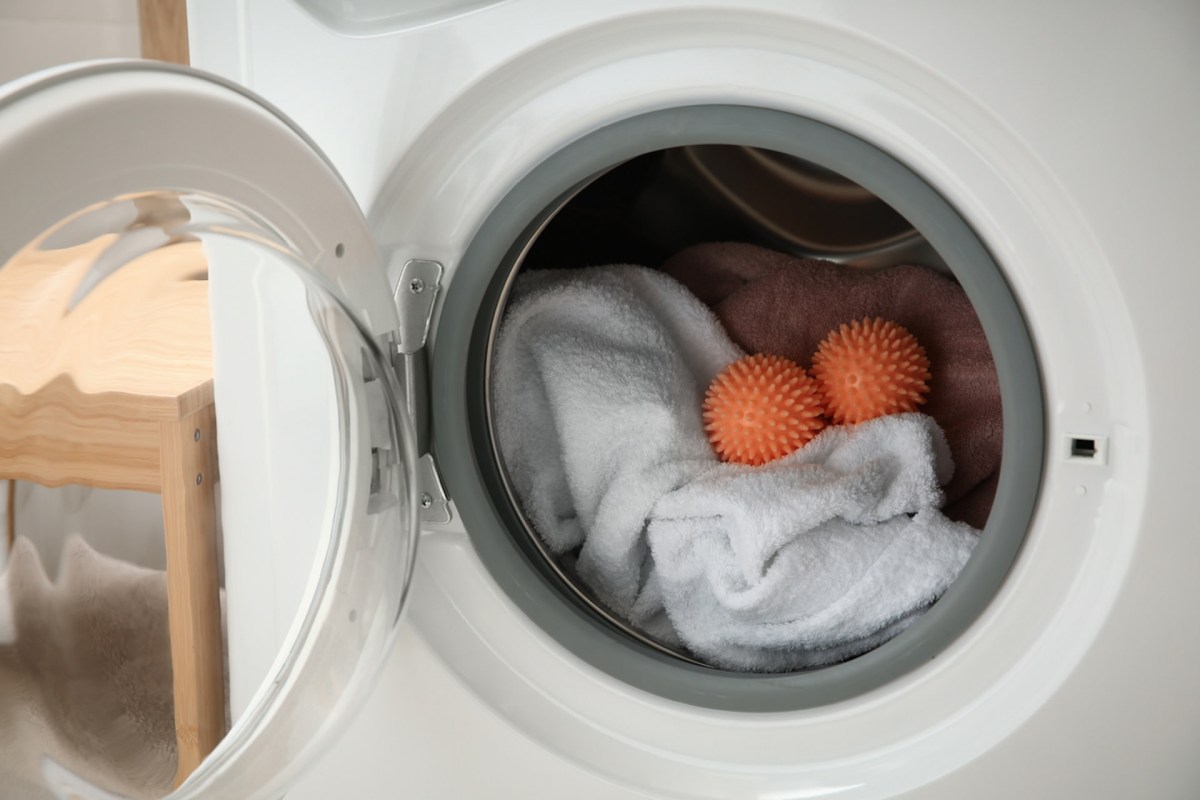Dryer sheets are commonly used to keep your clothes soft, static-free, and fragrant when they come out of the dryer, but they come with an environmental cost. But how do their more sustainable alternative, dryer balls, stack up?
What are dryer balls?
Dryer balls are small woolen, plastic, or rubber balls that make a reusable alternative to fabric softener or dryer sheets. Like softener or dryer sheets, they help to soften your clothes and reduce static cling as they fall about the dryer.
By tumbling about the machine, dryer balls fluff up and loosen the fibers on your clothes, which helps them retain their soft, flexible feel. This also increases the airflow across your clothes' surface, which allows them to dry more quickly.
Unlike dryer sheets, which prevent static by releasing positive ions, dryer balls only reduce static — though they will still make some difference to how much your clothes cling to you.
They do so by separating clothing items, which stops them brushing against each other, and by absorbing moisture from your wet clothes — the resulting humidity is a buffer against static.
Why do dryer balls matter?
Dryer balls are a more environmentally friendly alternative to dryer sheets, which have been scored poorly by the Environmental Working Group for their use of toxic chemicals.
One study published in the Air Quality, Atmosphere & Health journal in 2011, summarized by Healthline, found that dryer vents release as many as 25 volatile organic compounds (VOCs), which can be hazardous to human health.
Acetaldehyde and benzene, for example, are both considered carcinogens and are used in some dryer sheets — although you would need to be exposed to a heavy dose to see significant health impacts.
Commonly, dryer sheets contain fragrances and a chemical called dipalmitoylethyl hydroxyethylmonium methosulfate, both of which the EWG says has been linked to respiratory illnesses like asthma and aquatic toxicity — if chemicals from dryer sheets leak into the environment, they can be toxic for marine life.
Over time, these chemicals can accumulate and clog your dryer's lint screen, making it less efficient and more costly to run. A choked lint filter reduces your dryer's air flow, which means it requires more energy to work.
Dryer sheets are also made out of polyester, a type of plastic. By design, they are single-use products, which means that they generate needless plastic waste that is sent to landfills — or worse, because of their flimsy appearance, they could easily be carried from trash cans into waterways or oceans.
How dryer balls help the environment
Because dryer balls are reusable, they are a fast way to cut the waste generated by single-use dryer sheets.
They are chemical-free, meaning that you won't risk releasing toxic VOCs and other chemicals into your home or the environment.
By absorbing moisture and increasing the airflow in your dryer, dryer balls also allow your clothes to dry faster, which will help to reduce your energy use and bills. One report found that they can cut drying time by between 15% and 25%.
Join our free newsletter for easy tips to save more, waste less, and help yourself while helping the planet.









